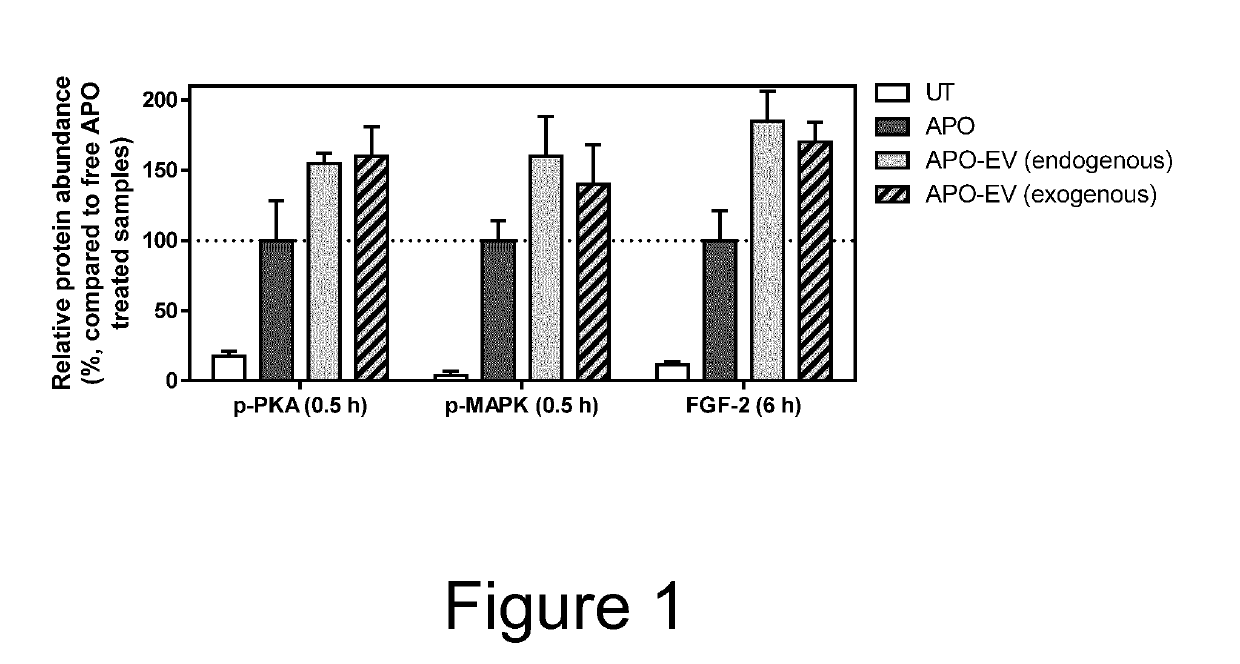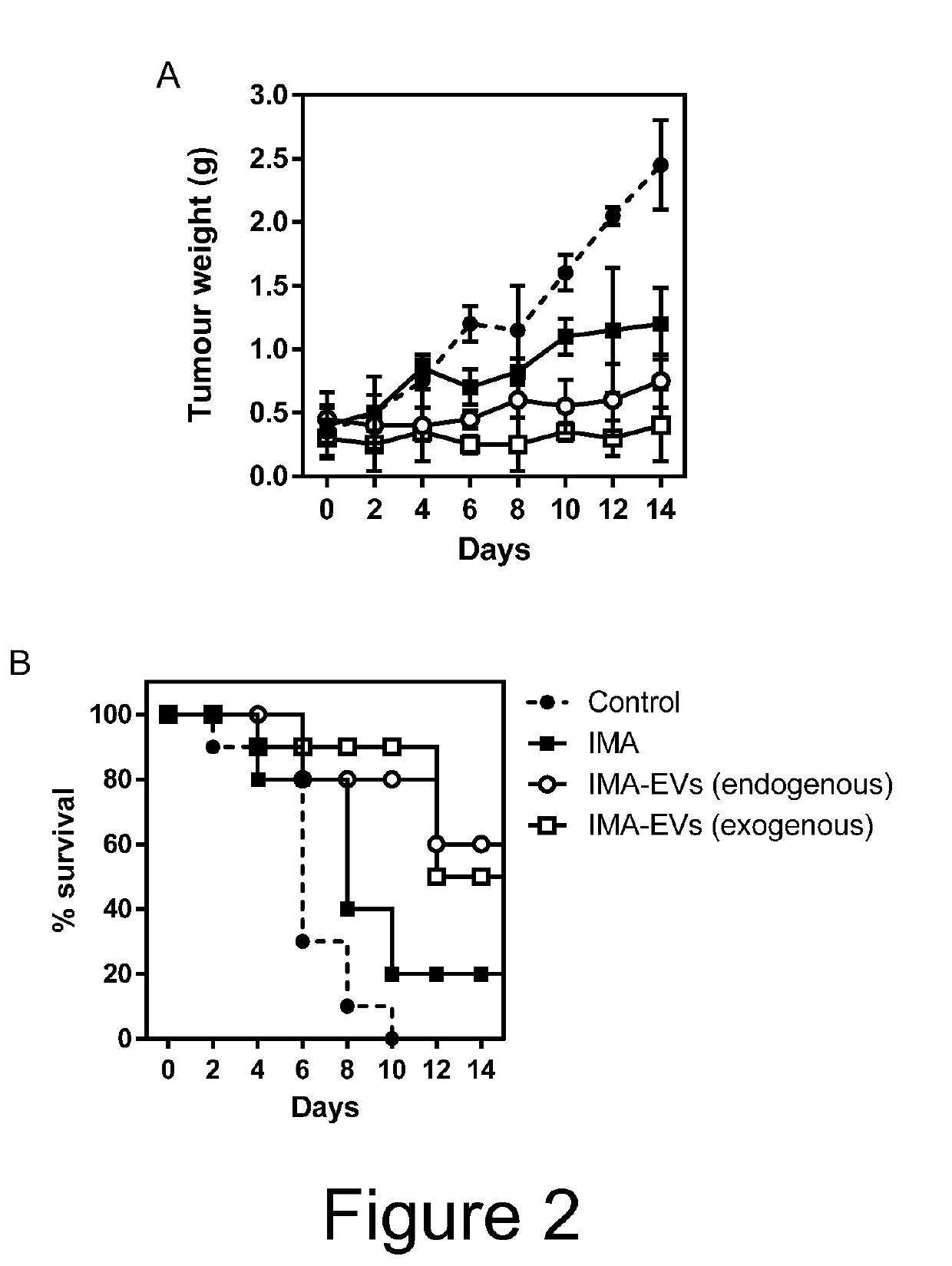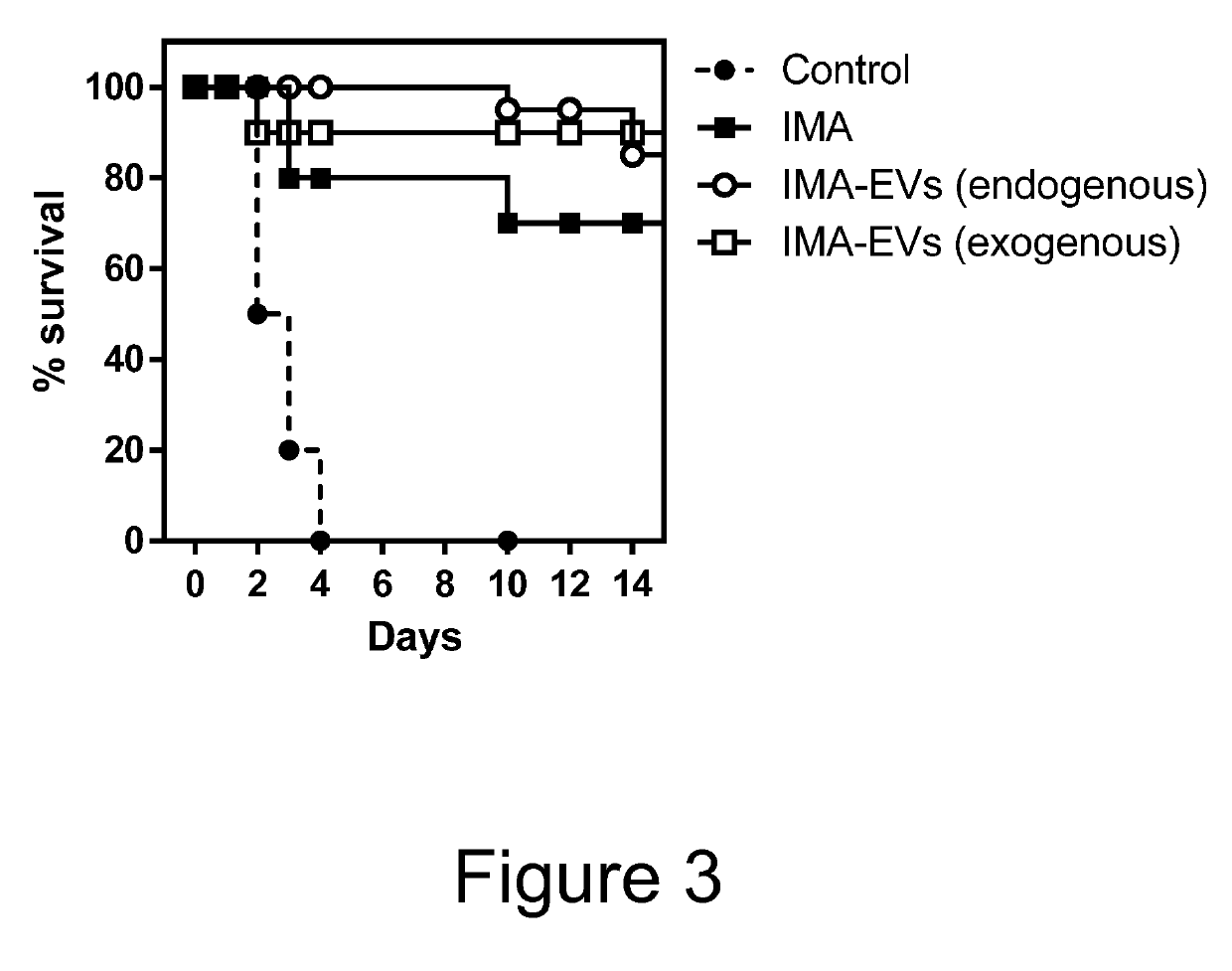Ev-mediated delivery of binding protein-small molecule conjugates
a small molecule conjugate and ev technology, applied in the field of extracellular vesicles, can solve the problems of significant waste of small molecule agents, unquestionable utility of evs as drug delivery vehicles, and difficult control of the loading process
- Summary
- Abstract
- Description
- Claims
- Application Information
AI Technical Summary
Benefits of technology
Problems solved by technology
Method used
Image
Examples
example 1
ne Loaded EVs for Parkinson's Disease
[0060]MSCs endogenously expressing dopamine receptor D2, and MSCs genetically engineered to express a fusion protein comprising the EV protein CD63 and dopamine receptor D2, were cultured in MSCGM growth medium. To endogenously load MSC-EVs with apomorphine (APO), a drug used for the therapy of Parkinson's disease, MSC culture medium was replaced with Opti-MEM medium and incubated with 2 μM APO for 12 h. Thereafter, the conditioned medium was collected and APO-EVs isolated via tangential flow filtration and size exclusion chromatography. To exogenously load MSC-EVs with APO, EVs from untreated MSCs were isolated using as above, then incubated with 2 μM APO for 2 h, and re-isolated to remove APO molecules that had not been loaded to EVs. APO loading to EVs is facilitated by its interaction of dopamine receptor D2 on EV surface which leads to “precharging” of the signalling competent dopamine receptor.
[0061]The activity of APO-EVs, obtained from bo...
example 2
Loading to EVs for Cancer Therapy
[0062]MSCs endogenously expressing ABL1 receptor tyrosine kinase and MSCs genetically engineered to express a fusion protein of the EV protein syntenin and ABL1 receptor tyrosine kinase were cultured in MSCGM growth medium. To endogenously load MSC-EVs with imatinib (IMA), MSC culture medium was replaced with Opti-MEM medium and incubated with 2 mg IMA. Thereafter, the conditioned medium was collected and IMA-EVs isolated via tangential flow filtration and size exclusion chromatography. To exogenously load MSC-EVs with IMA, EVs from untreated MSCs were isolated using as above, then incubated with 2 mg IMA for 2 h, and re-isolated to remove IMA molecules that had not been loaded to EVs.
[0063]IMA is a drug used for the therapy of chronic myelogenous leukaemia (CML) due to its binding to ABL1 and subsequent stabilisation of the Bcr-Abl receptor tyrosine kinase complex, rendering IMA an efficient inhibitor of the kinase. IMA loading to EVs is facilitated...
example 3
Loading to EVs for Preventing Intravenous LPS-Induced Sepsis
[0065]Cell culture, EV loading and EV isolation was performed as in Example 2, but the activity of EV loaded IMA was tested in intravenous LPS induced acute sepsis model. It is known that LPS treatment induces high level of reactive oxygen species that are implicated in septic shock and ARDS. IMA function to increase catalase activity has been related to lowered DNA damage and lowered production of pro-inflammatory cytokines TNF-alpha and IL-6.
[0066]Mice were sensitised to LPS by retro-orbital injection of 5 mg / kg of LPS. IMA and EV-IMA treatment was started one day before conducted daily, with equivalent of 200 mg / kg / day IMA, and mouse survival monitored.
PUM
| Property | Measurement | Unit |
|---|---|---|
| Pharmaceutically acceptable | aaaaa | aaaaa |
Abstract
Description
Claims
Application Information
 Login to View More
Login to View More - R&D
- Intellectual Property
- Life Sciences
- Materials
- Tech Scout
- Unparalleled Data Quality
- Higher Quality Content
- 60% Fewer Hallucinations
Browse by: Latest US Patents, China's latest patents, Technical Efficacy Thesaurus, Application Domain, Technology Topic, Popular Technical Reports.
© 2025 PatSnap. All rights reserved.Legal|Privacy policy|Modern Slavery Act Transparency Statement|Sitemap|About US| Contact US: help@patsnap.com



